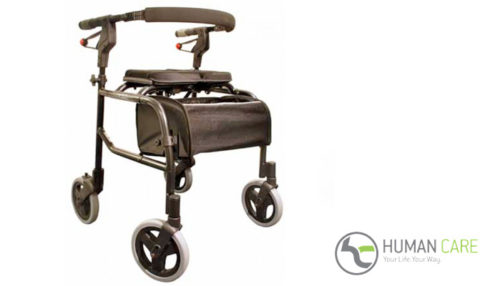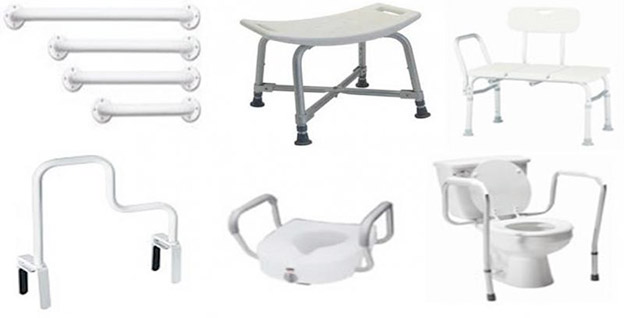Heart Health: High Blood Pressure
 Your heart is in charge of pumping blood to your body. This is a very important job so keeping your heart healthy is essential. We’re here to explain to you the importance of heart health and healthy blood pressure!
Your heart is in charge of pumping blood to your body. This is a very important job so keeping your heart healthy is essential. We’re here to explain to you the importance of heart health and healthy blood pressure!
What is Blood Pressure?
Blood pressure is the force that occurs when the heart pumps blood and pushes against the walls of the arteries in the heart. Blood pressure is measured in millimeters of mercury (mmHg).
What is High Blood Pressure?
High blood pressure, also known as hypertension, occurs when there is too much pressure in your blood vessels. High blood pressure damages blood vessels which can lead to serious health issues. There are different stages of blood pressures and 7.5 million people in Canada live with hypertension. Here are the different stages of high blood pressure according to the Hypertension Canada:
| Stages | Systolic (Top Number) | Diastolic (Bottom Number) | |
| Low Risk | Less than 120 | and | Less than 80 |
| Moderate Risk | 121-139 | and | 80-89 |
| Elevated Risk | Above 140 | or | Above 90 |
Blood Pressure Goals
There are different blood pressure goals for different people, which are determined by the health and age of the individual. For patients who are 60 years or older that do not have diabetes or chronic kidney disease, an ideal blood pressure should be less than 150/90 mmHg. Patients who are over 60 with diabetes or chronic kidney disease should strive for a goal blood pressure of less than 130/80 mmHg.
What Causes High Blood Pressure?
There are several causes of high blood pressure. Some of these causes include:
- Family history
- Obesity
- Alcohol/Smoking
- Lack of exercise
- Stress
Even if the above listed potential causes do not apply to you, it is still important to visit your doctor to have your blood pressure checked.
What are the Symptoms of High Blood Pressure?
According to the Hypertension Canada, high blood pressure is actually often symptomless. There are many myths regarding the symptoms, but the best way to determine if you have high blood pressure is to visit your doctor regularly for check-ups.
How Can I Lower My Blood Pressure?
There are many ways to improve or lower your blood pressure. It is important to work with your physician to determine the path that you should take. There are some changes that you can make in your everyday life in order to help lower your blood pressure. Some of these changes include:
- Eating a well-balanced, low-salt diet
- Limiting the consumption of alcohol
- Engaging in regular physical activity
- Managing stress
- Maintaining a healthy weight
- Quitting smoking
- Working with your doctor
Checking your blood pressure often is a great way to learn more about your heart and to start living a healthier lifestyle.
Blood Pressure Monitor
A blood pressure monitor is a device that measures your blood pressure through a cuff.
How to Use
Blood pressure monitors are simple to use. All you have to do is attach the cuff to your upper arm, just above the bend in your elbow, and start the machine. It is important to:
Be Still
It is important to sit still during your reading, but also 30 minutes before your reading! Also make sure not to smoke, drink caffeinated beverages, or alter your normal heart rate/blood pressure in anyway.
Sit Correctly
Sit up straight with your back supported, your feet flat on the floor, and your arm on a flat surface at heart level.
Measure at the Same Time Every Day
Measuring your blood pressure at the same time every day allows for you to gather a consistent reading. This will let you determine your average blood pressure.
Take Multiple Readings
Taking multiple readings, a minute apart from each other will eliminate any errors. Make sure to jot all of these numbers down in your blood pressure journal so that you can review the results with your physician.
Where to Purchase
You can purchase a blood pressure monitor as a home health care store, such as Adapt Home Health Care!
Blood Pressure Journal
Keeping a blood pressure journal is a great way to determine the best course of health care for you! If you only measure your blood pressure at the doctors, many different variables can cause it to be a skewed reading. Whether you suffer from white coat hypertension or you have masked hypertension, the best way to get a true sense of your blood pressure is to keep a journal.
What You Need
All you need in order to keep a blood pressure journal is a pen, a journal, and a blood pressure monitor.
How to Use
Measure your blood pressure at the same time every day. Write down the results in a journal and make a note of anything you may have done that day that could have influenced your blood pressure. This way, if you notice any concerning readings, you can bring the journal with you to the doctors and let them see the results.
Blood pressure journals are also a great way to determine if a prescribed blood pressure medication is doing its job! These journals, although simple, are extremely helpful to your health care provider.
Remember, home monitoring is not a substitute for seeing your physician! Always make sure to make a plan with your doctor in order to keep your heart happy, healthy, and strong.
If you would like to purchase a blood pressure monitor in order to track your blood pressure visit Adapt Home Health Care today! We have 3 stores conveniently located in the Greater Toronto Area in order to better serve you. Patients are also more than welcome to come in for daily complimentary blood pressure checks and log book keeping! This ensures routine monitoring and appropriate intervention when necessary.
- Adapting the Workplace for People with Disabilities - December 2, 2020
- More About Rollators and The NeXus 3 - March 26, 2020
- Bathroom Safety 101 - March 12, 2020

 905-822-1614
905-822-1614



